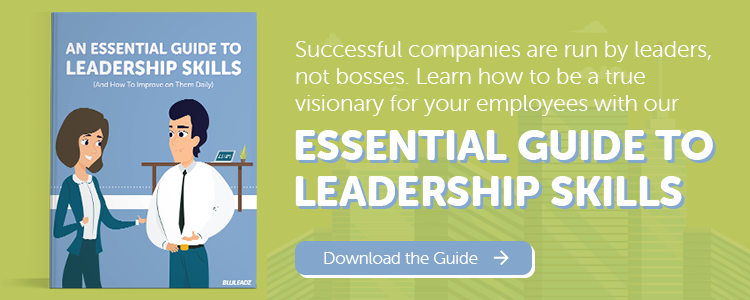7 Performance Evaluation Methods
- 1. Management by Objective (MBO)
- 2. Critical Incident Method
- 3. Checklist Method
- 4. 360-Degree Performance Appraisal
- 5. Self-Evaluation
- 6. Ratings Scale
- 7. Performance Test
Your employees show up to work every day, but are they really moving the needle?
In today’s data-driven culture, everyone is tracking their bottom-line performance metrics. While this is crucial, it only represents end results, not the process that led to them.
Like any form of data analysis, figuring out what’s going on with employee performance starts by picking a framework that helps you collect, prioritize, and interpret data.
Performance evaluation methods differ in core assumptions and how they’re applied. Picking one influences all the steps that follow, so it’s crucial to choose carefully. Most brands end up combining several methods and may use them at different points in an employee’s career.
There are plenty of performance evaluation methods, some dating all the way back to the 1960s. However, a handful have gradually risen to the top of the heap.
Let’s dive into the top performance evaluation methods today’s COOs prefer.
Need help right away?
Evaluation Methods for Employees: A Quick Primer
Three main elements come together in any employee evaluation:
- The work someone does – including its quality and quantity.
- The time it takes for the employee to perform all that work.
- The actual value an employee’s work adds to the company.
Ideally, all employees would receive a regular assessment of their strengths and weaknesses based on the latest projects they’ve been involved in. Employees thrive on detailed, actionable qualitative feedback – it tells them what they need to improve to go to the next level.
From the COO’s perspective, however, quantitative feedback secured with consistent employee evaluation methods grounds decision-making. It provides a bird’s-eye view of exactly what’s happening. Qualitative feedback, on the other hand, fills in the details and context.
By using multiple methods, you can capture a full spectrum of information to inform critical HR decisions like promotions and talent development plans. The key is understanding exactly what each method contributes and where its blind spots may lie.
7 Top Employee Evaluation Methods to Move Your Organization Forward

1. Management by Objective (MBO)
This method is a simple one that allows you to close the loop between employee performance and key strategic objectives. Management sets a metric that represents the expected level of attainment, then tracks each employee’s outcomes.
Sales quotas are a form of MBO. They’re great because it’s easy to monitor them over time and connect causes to effects.
2. Critical Incident Method
This method is especially popular in the customer service world and allows managers to generate more global feedback about how an employee handles issues.
It encourages managers to zoom in on particular events where the person’s behavior was positive or negative and provide insight on how to get aligned with best practices – for example, handling customer complaints better.
3. Checklist Method
The checklist method relies on a list of behavioral criteria each worker is expected to meet: For example, on-time delivery or teamwork. The evaluator indicates items the employee is successful with and provides targeted feedback for items that are lacking.
In a weighted checklist method, each attribute has its own score value. That helps focus improvement efforts.
4. 360-Degree Performance Appraisal
360-degree feedback is popular in large, world-class organizations like Google and Microsoft.
It incorporates feedback not only from managers, but from peers, direct reports, and higher-level supervisors the employee frequently works with. This type of feedback is valuable when preparing team members to take on responsibilities at a higher level.
Many organizations leverage software solutions to streamline the assessment process. For example, tools like iSpring Learn LMS provide a comprehensive overview of all your team members, aligning your competency model with essential software features that support scalability, including automations, comparative analysis, and more.
5. Self-Evaluation
Written reflection enables employees to uncover ways to improve performance that make sense to them. Although it’s highly subjective, it provides fuel for a more detailed discussion.
Making note of where employees have high or low opinions of their own work may make it easier for mentors to meet them where they are and personalize a path of growth.
6. Ratings Scale

Most organizations have used this approach. It specifies goals – behaviors, traits, skills, or project attainment – on a scale usually running to 5 or 10 points.
While this is a flexible choice, it’s essential everyone have the same understanding of how the scale works: You might consider 3 out of 5 “good” while an employee understands it to mean “average.”
7. Performance Test
The right form of testing enhances recall and lets people operationalize new knowledge.
While a written or multiple choice test benefits from greater objectivity, practical presentation of skills is often a better sign of mastery. It’s vital the evaluator of this test be an expert in the subject matter and skilled enough to communicate the meaning of the results up the hierarchy.
Collecting the right data and watching the right metrics lets you continuously improve processes: Effective performance evaluation ensures your employees can do the same. These seven methods will provide you with a solid toolkit for putting performance in context.



Rob Steffens
I am the Director of Marketing here at Bluleadz. I'm a huge baseball fan (Go Yankees!). I love spending time with friends and getting some exercise on the Racquetball court.